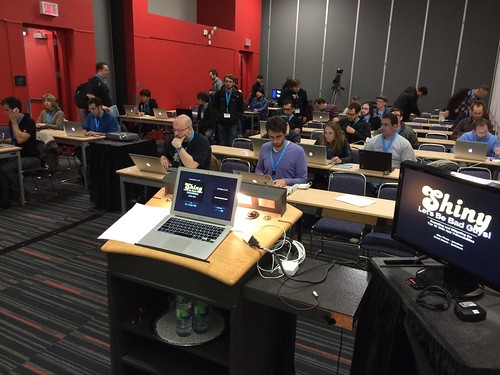This is the time of year when the upcoming PyCon really starts to feel closer, with the close of our earliest CFP (Call for Proposals) tomorrow on November 30. This is the first of several milestones for the conference that start arriving more and more frequently through the late autumn and winter. Each milestone ratchets PyCon one step closer to its arrival.
Our earliest CFP is for our Tutorials, which closes tomorrow — at the end of the day on November 30 anywhere on Earth. So if it is still November 30 in your time zone, then the CFP will not yet be closed!
What are the main features of Tutorials?
- Tutorials are 3-hour-long courses that pack the first two days of the PyCon conference schedule.
- Students register ahead of time and pay separately for each 3-hour tutorial they attend.
- We end the Tutorials CFP a full month earlier than for Talks and Posters, so the tutorials committee has extra time to fully vet each proposal and to generate a solid line-up of valuable topics that will repay the students’ investment to attend them.
- In return for providing this value to the conference, we compensate each instructor. The amount can vary each year depending on the conference budget, but in 2016 we were able to reward them each with $1,500 for the instruction they provided our attendees.
- You can learn more at our Proposing a Tutorial page, which includes links to long lists of topics in case you need inspiration!
If you proposed a tutorial last year, you will be happy to learn that we have streamlined the form to only four fields beyond the title itself:
- The Description is the public advertisement for your Tutorial and will be visible on the PyCon web site — replacing what used to be separate Description and Abstract fields. The other fields below are private and shared only with the committee.
- The Audience field lets you write a free-form description of who you think will be interested in and benefit from your tutorial. It replaces the old Audience, Category, and Perceived Value fields.
- The most detailed information, as before, belongs in the Outline that you write up for the committee.
- Finally, the Additional notes let you describe your previous experience as an instructor and mention any special setup or materials that your tutorial will require. It replaces the old fields Additional Notes, Additional Requirements, More Info, and Handout.
Hopefully the new form means that you spend less time puzzling over what the difference between a Description and an Abstract is, and more time focusing on your ideas about your course!
Does teaching at PyCon interest you? There is only one day left to submit your proposal! Head on over to the Proposing a Tutorial page and get your idea submitted before the end of the day on November 30 anywhere on Earth.


Comments